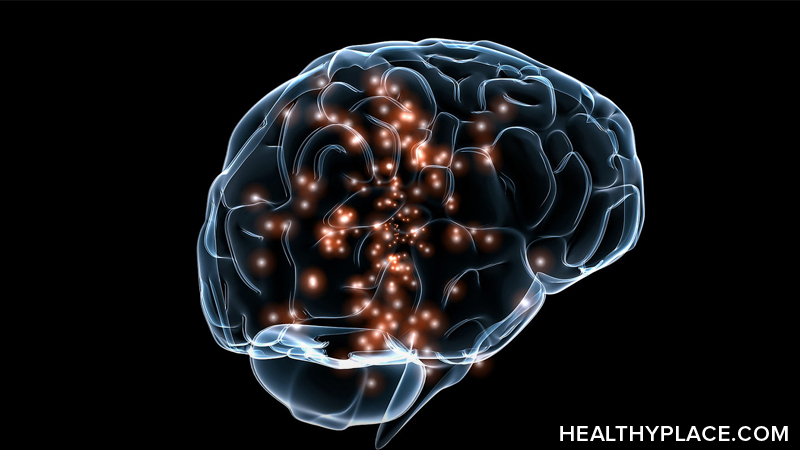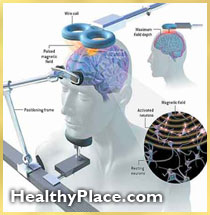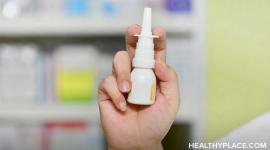Transcranial Magnetic Stimulation (TMS) for Depression

Transcranial magnetic stimulation (TMS) is a noninvasive therapy that uses a rapidly changing magnetic field to stimulate the neurons in the brain. Repetitive transcranial magnetic stimulation (rTMS) refers to the repetitive use of TMS in the treatment of neurological and psychiatric disorders. Repetitive transcranial magnetic stimulation has been tested in the treatment of:1
- Depression
- Migraines
- Strokes
- Parkinson's disease
- Dystonia
- Tinnitus
- Auditory hallucinations
While rTMS is approved for the treatment of depression in the United States, some doctors are unsure of its efficacy. However, a well-designed placebo-controlled study sponsored by NIH (National Institute of Health) did show remission in 14.1% of depressed patients given rTMS while only 5.1% of those remitted were given inactive (placebo) treatment. This response rate was seen over three weeks of daily weekday treatment (15 treatments total).2
Transcranial Magnetic Stimulation Therapy Procedure
The rTMS therapy procedure is outpatient and doesn't require anesthetic. Patients are awake and have a plastic-encased magnetic coil placed just above the scalp. There may be a tingling or tapping sensation in the scalp during the rTMS procedure. Ear plugs may be worn due to the noise of the magnetic stimulation device. Headaches can occur during and after an rTMS treatment but are generally treated with over-the-counter medication.
The rTMS therapy treatments are about 40 minutes long and a full treatment course is at least 20-30 treatments long over 2-3 weeks.3

Cost of rTMS and Maintenance rTMS
Repetitive transcranial magnetic stimulation therapy costs vary, but an initial course of rTMS may cost $5000 - $7500 or more.
Depending on the severity of the depression, the therapeutic effect may last only a few months. Once symptoms of depression begin to return, additional rTMS called maintenance rTMS is required. Maintenance rTMS requires approximately half the treatments of the initial course and may be needed anywhere from a few months to more than two years after the initial treatment depending on the individual's response to treatment. Maintenance antidepressant medication therapy may also be effective.
More information on rTMS for depression or other illnesses can be found at:
- NeuroStar TMS Therapy in the US: http://www.neurostartms.com/Home.aspx
- MindCare Centers in Canada: http://www.mindcarecentres.com/
APA Reference
Tracy, N.
(2022, January 4). Transcranial Magnetic Stimulation (TMS) for Depression, HealthyPlace. Retrieved
on 2025, November 19 from https://www.healthyplace.com/depression/depression-treatment/transcranial-magnetic-stimulation-tms-for-depression



